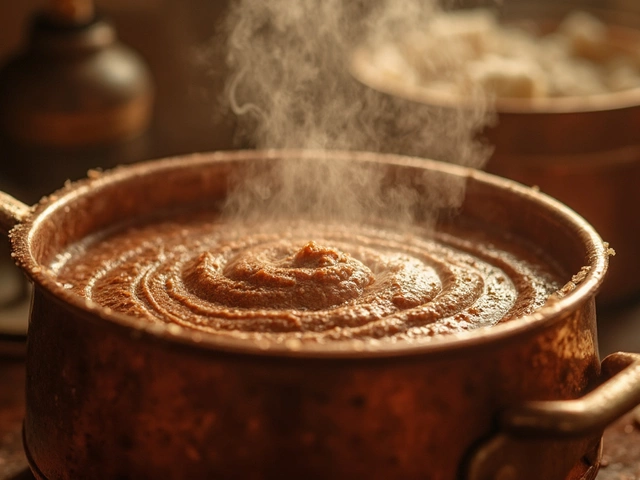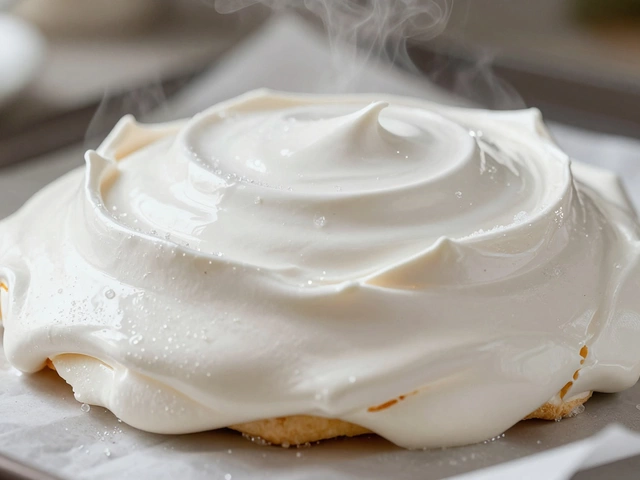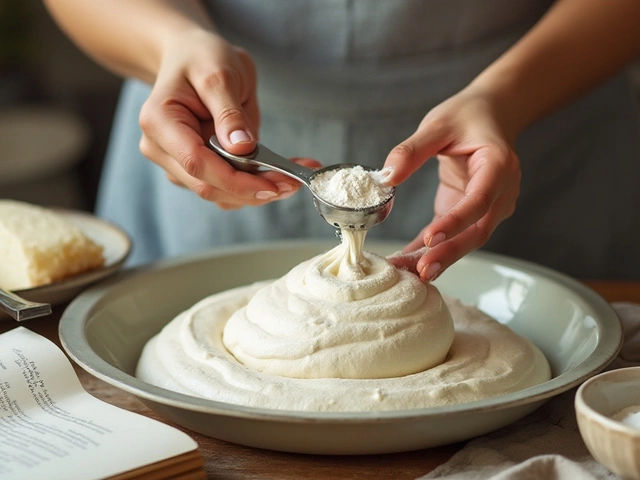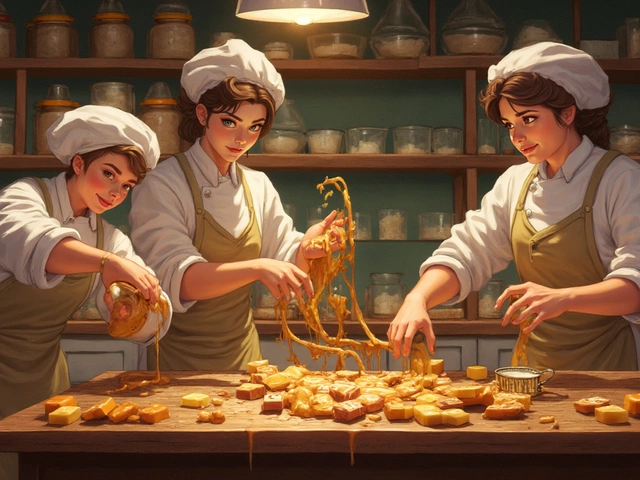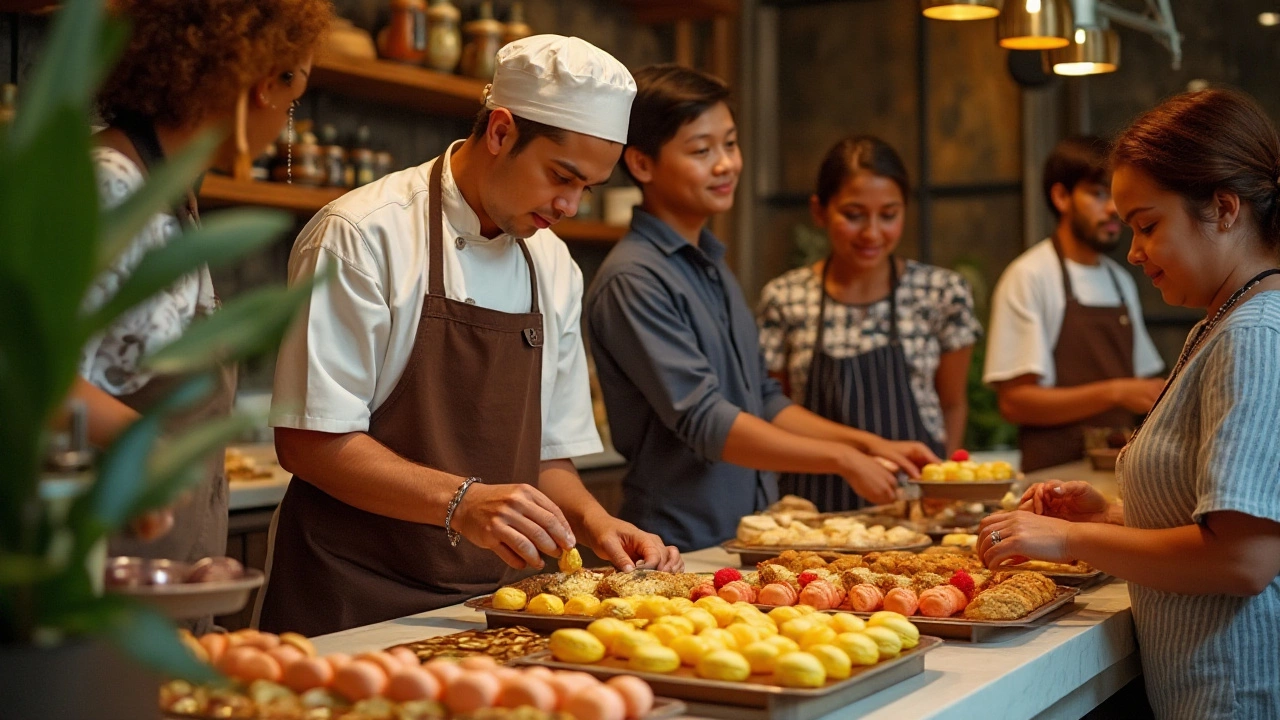
Macarons, those delicate almond meringue-based confections filling patisserie windows, paint a storied mosaic of culinary exploration. In Brazil, these treats have captured the imagination and taste buds of dessert enthusiasts and bakers alike—emerging as a symbol of global fusion in gastronomic circles.
The journey of macarons across continents is a testament to cultural exchange and adaptation. This article delves into their entry into Brazil's rich culinary tapestry, exploring the pioneers who transported this French delicacy and the evolution of its flavors amidst Brazil's vibrant food scene.
- The French Connection
- Macarons in Brazil: A Delicate Beginning
- Flavor Evolution in Brazilian Macarons
- Embracing Macarons in Modern Brazilian Cuisine
The French Connection
The birth of macarons as we know them today is deeply rooted in the French gastronomy landscape. These sweet delights made their debut in the culinary world when they were introduced to France by Italian chefs who accompanied Catherine de' Medici in the 16th century. However, it was in French patisseries that macarons gradually took on their iconic dual-shell form with a luscious filling. Paris became the epicenter for perfecting these airy, almond-flavored confections, with Pierre Desfontaines of Ladurée credited for the delicate sandwich structure in the early 20th century.
The allure of macarons lies in their subtle crunch and soft center, drawing a line between culinary art and science. Crafted meticulously with almond flour, egg whites, and sugar, they became a luxurious treat. Charlotte Pilcher, a renowned pastry historian, once remarked,
"Macarons epitomize the balance of elegance and restraint, a symphony of taste that whispers to the senses rather than overwhelming them."
The global spread of macarons has much to do with the growing appreciation for French patisserie techniques, which gained momentum alongside the globalization of culinary talent and tourism. As chefs from various countries flocked to Paris for training, they often returned to their homelands carrying with them the art of macaron-making, ensuring these treats have a place on the world stage. Today, they are celebrated not just for their taste but also for their role as a canvas for inventive flavors and vibrant colors.
In fact, the allure of macarons expanded through international competitions and exhibitions that highlighted France's rich dessert culture. This spread across continents, making its way into countries like Japan, the United States, and eventually, Brazil. They served as both a symbol of sophistication and a challenging test for budding pastry chefs worldwide.
The transition of macarons from French exclusivity to a Brazilian favorite was paved through cultural exchange and adaptiveness. French expatriates and Brazilian chefs trained in France became pivotal in introducing these desserts to Brazil's shores. As French cuisine gained traction in Brazil's urban centers, so too did the popularity of macarons, enticing both the culinary curious and dessert aficionados alike.
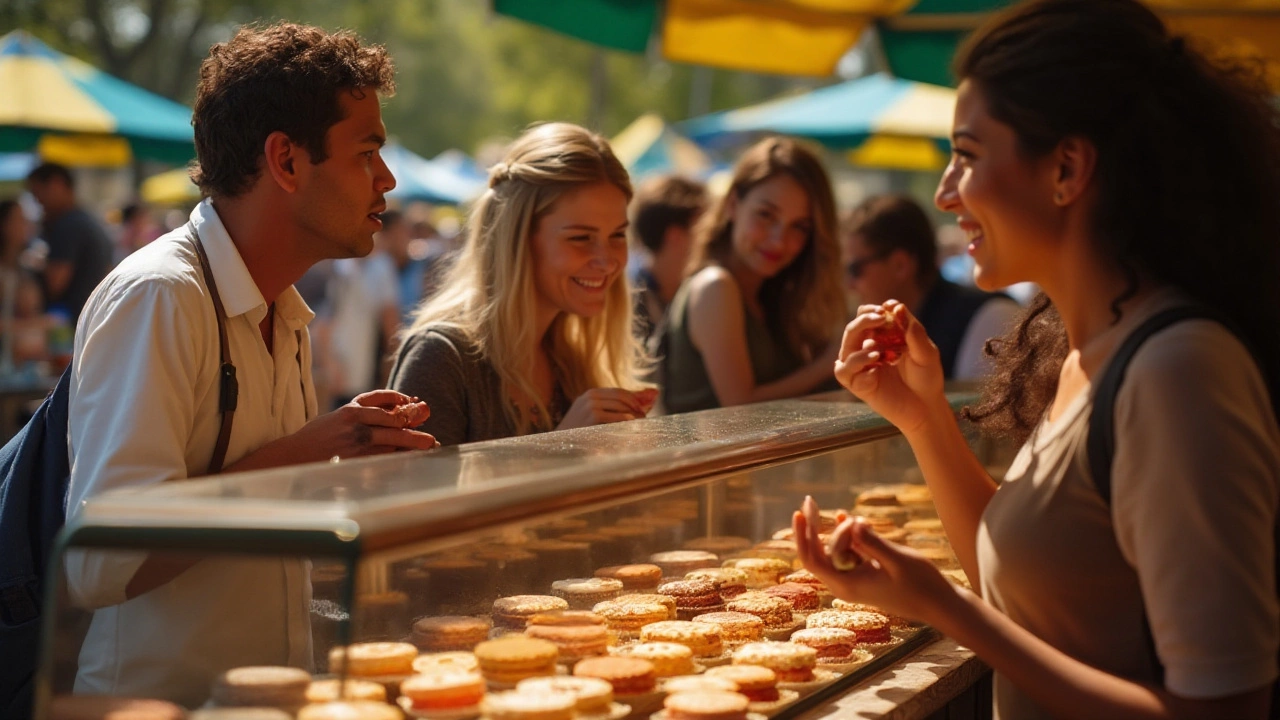
Macarons in Brazil: A Delicate Beginning
The story of macarons landing on Brazilian shores is one of culinary curiosity and adaptation. Initially brought over by European immigrants, these delicate pastries captivated the attention of local dessert aficionados in Brazil. They first appeared in niche patisseries in São Paulo and Rio de Janeiro, echoing the sophistication of their Parisian origin. Over time, these treats began to spread their wings, appearing in gourmet food festivals and increasingly featured on the dessert menus of top-tier restaurants.
What made the macarons so intriguing to Brazilians was not just their elegant appearance or the challenge they posed to bakers but also their versatility in flavor incorporation. The initial flavors mirrored classic French variants: chocolate, vanilla, and pistachio. However, it wasn't long before inventive Brazilian chefs started experimenting with distinctive local flavors like passion fruit, açaí, and even caipirinha, putting a unique twist on this age-old dessert. Such adaptations were warmly welcomed, highlighting the blend of French expertise with Brazilian zest for innovation.
An essential part of their cultural assimilation was the introduction by notable figures in the culinary world. Renowned pastry chefs and touring French-born culinarians played pivotal roles in popularizing these confections. As one famous Brazilian chef once noted, “Macarons were a gift to Brazil's sweet palate—a reminder that the world of flavors is boundless.”
These words, captured in various food magazines, underscore the broader acceptance and affection for these treats.Another fascinating aspect of macarons' early days in Brazil was their role as symbols of luxury and exquisite taste, often reserved for special occasions and high-profile social gatherings.
Today, these French-origin delicacies have secured a permanent spot in the hearts and kitchens of Brazil, becoming a staple in the country’s patisserie offerings. The marriage of imported technique and local ingredients speaks to a broader narrative of cultural exchange and the celebration of diversity through food. As more and more people become familiar with the tale of macarons in Brazil, it drives home the point that culinary innovation knows no bounds, and even the most traditional treats can find new life when introduced to fresh perspectives and flavors.
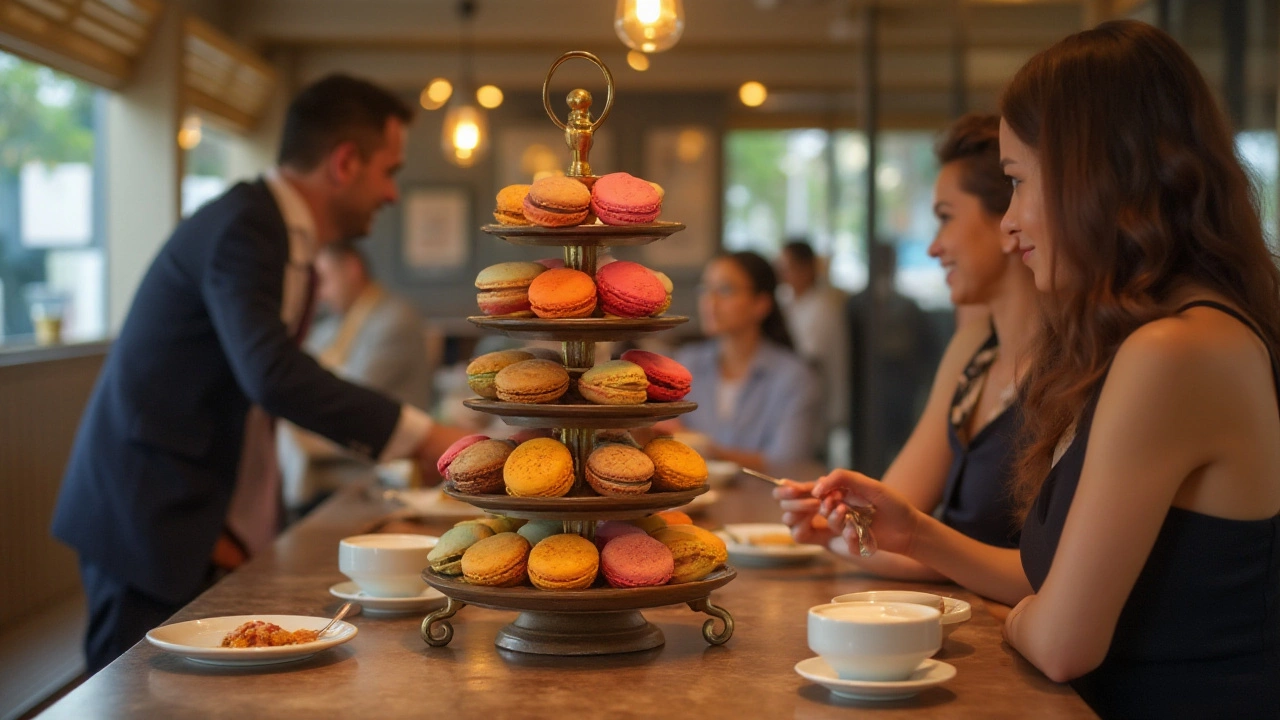
Flavor Evolution in Brazilian Macarons
The evolution of macaron flavors in Brazil is a vibrant story that reflects the country's rich tapestry of tastes and cultural diversity. Initially introduced as a classic French pastry, the macarons quickly took on a unique identity as Brazilian pastry chefs experimented with local ingredients. The adaptation was inevitable in a land where fruits like passion fruit, acai, and guava add bursts of color and flavor to everyday dishes. As the traditionally pastel-colored macaron shells filled bakery displays in cities such as São Paulo and Rio, their interiors began transforming with distinctly Brazilian quirks, tapping into flavors synonymous with warmth and sunshine.
In the bustling markets of Brazil, where the aroma of exotic fruits tickles the senses, the macaron found its new allies. Adventurous bakers adopted tropical fillings like mango and papaya, which elevated the dessert's profile significantly. One cannot talk about Brazilian macarons without mentioning the incorporation of brigadeiro, a beloved confection traditionally made from condensed milk and cocoa. This delightful marriage of French and Brazilian sweets not only warmed the hearts of dessert lovers but also contributed to spreading macaron culture throughout the country. These local adaptations highlight Brazil's ability to layer its culinary innovations with deep respect for tradition and international influence.
"In Brazil, we adapted French sweets to our local taste, making them irresistible even to those unfamiliar with their origins," notes renowned pastry chef Carla Pernambuco.
As macaron flavors diversified, the dessert began to mirror seasonal Brazilian produce, embracing variations that honored the nation's agricultural heritage. Characters like cachaça and coconut appeared, transforming the humble macaron into a canvas for storytelling. Bakers sculpted them into scenes representing festivals, emphasizing joys, celebrations, and friendships. The play between flavors is an ode not just to macaron mastery but also to the fearless culinary spirit deeply embedded in Brazilian culture. The willingness to experiment and redesign traditional recipes is indicative of a broader cultural phenomenon where global influences are reimagined with local flair, resulting in an extraordinary celebration of flavor.
Interestingly, the visual presentation of these macarons also underwent a transformation. Taking cues from Brazil’s vibrant Carnaval, macarons decorated with edible gold, vivid sprinkles, and colorful dust embody extravagance far removed from their subdued French cousins. The evolution from aesthetically pleasing to visually stunning is part of the Brazilian food narrative, a tale of celebration, communication, and community bonding. In encapsulating this burstiness, the macaron has transcended its identity as just a dessert, coming to symbolize the merging of worlds and flavors across time and space in a delicately assembled confection.
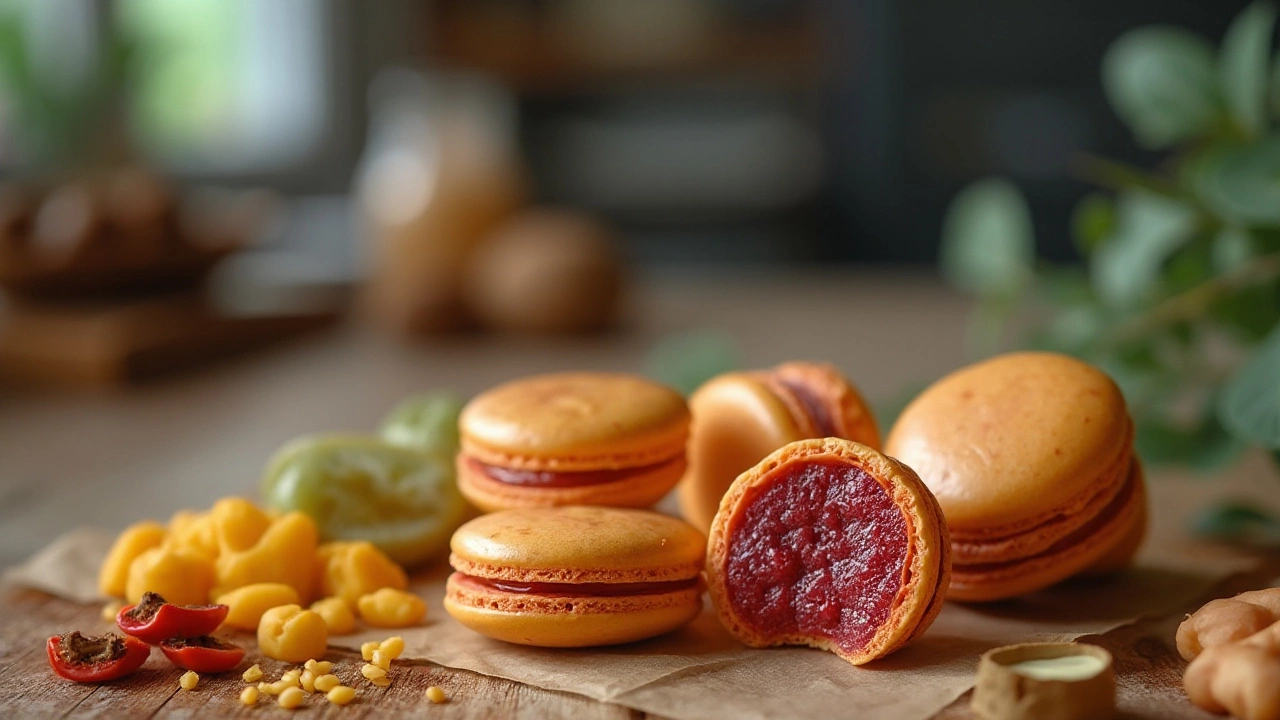
Embracing Macarons in Modern Brazilian Cuisine
In recent years, the delicate macarons have found a place of honor in the heart of Brazilian culinary culture. It is an intriguing fusion where European elegance meets the vibrant zest of Brazil. This delightful blend has opened new avenues for local chefs who tirelessly experiment with flavors, creating a version of the macaron that captures the essence of Brazil's diverse palate. From tropical fruits to local nuts, the creativity behind these transformations has made macarons not just a dessert, but a canvas that represents Brazil's innovative spirit.
The journey of the macaron in Brazil is about reinvention. Local pastry chefs saw an opportunity to add distinctly Brazilian tastes, like açaí, passion fruit, and even Brazil nuts. These adaptations reflect the country’s heritage, bridging traditional ingredients with this French classic. The growing trend of fusion cuisine has further elevated the status of the macaron, turning them into celebrated pieces at events, celebrated both for their aesthetic appeal and taste. This speaks volumes about the culinary landscape in Brazil and its open arms for flavors from around the world.
“Incorporating local flavors into macarons has allowed us to showcase the rich diversity of Brazilian ingredients,” explains renowned Brazilian pastry chef, Lais Souza.
“We are not just making macarons; we are innovating and telling stories through each bite,”she adds. The popularity of these desserts is also fueled by the Brazilian penchant for desserts that have a blend of textures and richness. A nation that loves its sweets, Brazil’s adaptation of the macaron reflects a broader trend in global culinary practices where boundaries are continuously blurred, and new flavor profiles emerge as a result.
For those looking to explore the vibrant world of Brazilian macarons, understanding the fusion of these distinct flavors offers an insightful look into how Brazil is interpreting this cherished dessert. Many bistros and bakeries have embraced this Euro-Brazilian mix, offering macarons that could surprise even the most discerning palates. As you bite into a macaron in Brazil today, you're likely to experience a burst of unexpected flavors, such as pineapple mixed with a hint of pepper or a velvety coconut laced with tart touches of cupuaçu. This evolution of flavors showcases the creativity of Brazilian chefs who continue to bring tradition and modernity together in delightful harmony.
The popularity of the macaron in Brazil can also be attributed to social media and the rise of food influencers who frequently showcase these colorful, charming pastries. Brazilian cuisine is undergoing a transformation that embraces and celebrates diversity. This is evident in the way macarons have been embraced so heartily across the country. Whether for a wedding dessert table or a simple indulgence with afternoon coffee, the macaron has secured a sweet spot in the fabric of Brazilian life.
The narrative of macarons in Brazil is more than just a culinary tale. It reflects the cultural openness of Brazilian society, eager to welcome flavors from abroad yet keen to inject their identity into every gastronomic experience. As we continue to see macarons evolve, one can't help but feel excitement for where this culinary journey will lead. Without a doubt, these sweet morsels have become an emblem of the creative thrust defining modern Brazilian cuisine.

